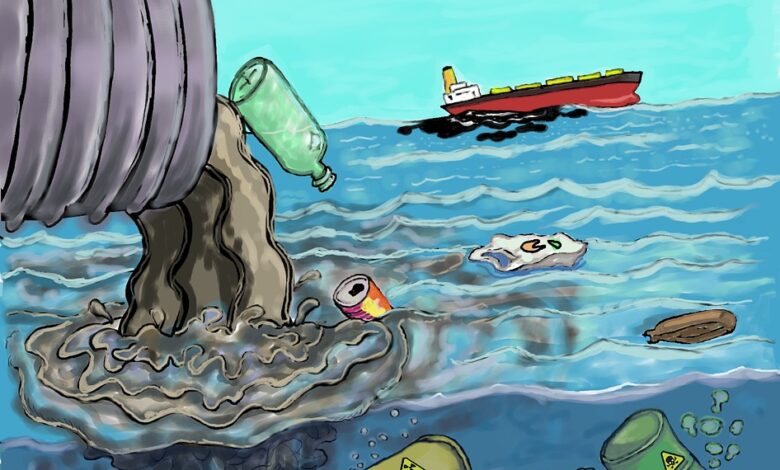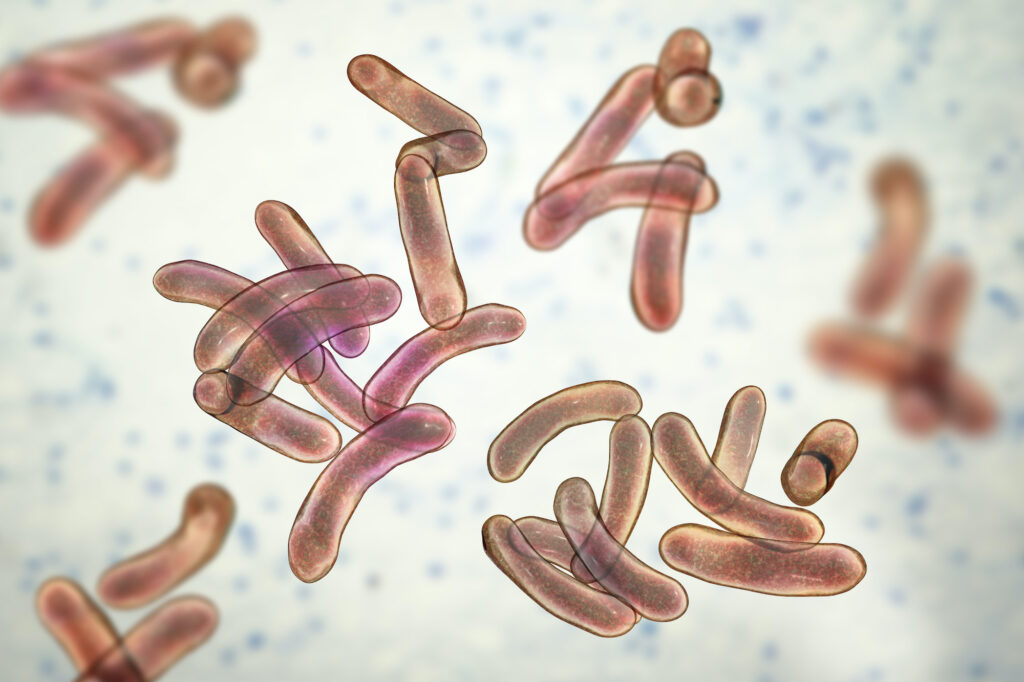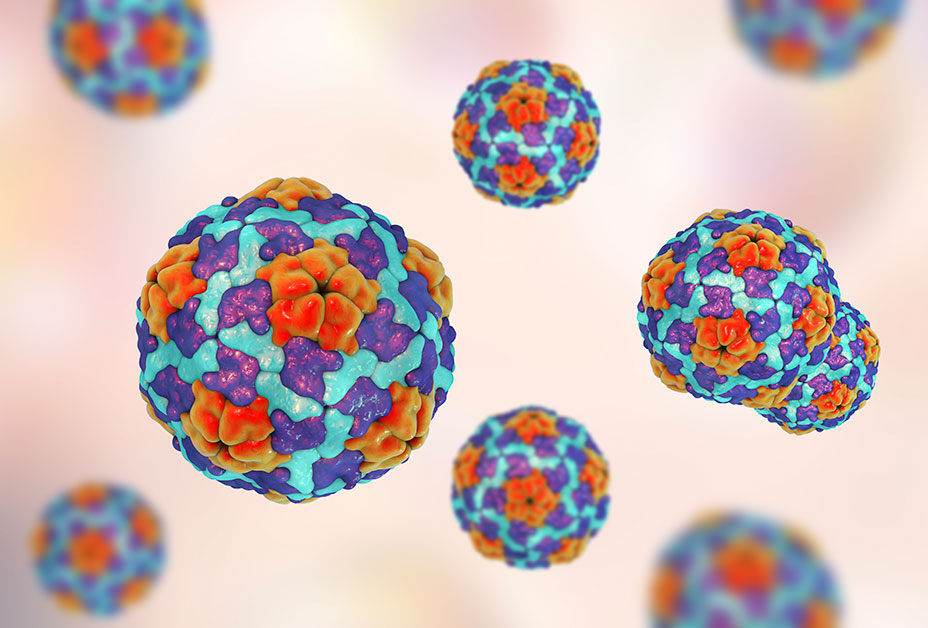4 Diseases Caused by Water Contamination

The most valuable resource to exist in the world—one without which no organism can survive or thrive—is water. Life has bloomed on Earth solely because 71% of the planet’s surface is covered with water.
Contaminated Water – A Healthcare Crisis

Water doesn’t just quench our thirsts, but it is an integral requirement for every living organism’s body. Every organ, tissue, and system require water to function. It is that essential element that encourages and fuels growth and metabolic processes. Without water, our organs would lose their molecular integrity and stop functioning altogether.
From respiration and digestion to excretion and circulation, no system or action of the body can be sustained without water. Studies that show that the human body can survive a month without food but not even past a week without hydrating properly, reinforce that no form of life can survive in the absence of water.
Yet even today, this basic human necessity is no more than a luxury in some of the underdeveloped countries. Over 780-million people lack access to pure drinking water, a fact that has had adverse effects on the health of millions. Consumption of contaminated water is the underlying cause behind 80% of modern-day illnesses, some of which are life-threatening ailments with fatal consequences.
Common Diseases Attributed to Contaminated Water
As in most diseases, prevention is better than cure. People must be made aware of the dangers, risks, and repercussions that are associated with the utilization of polluted water. Awareness about water contamination will make people observe caution, avoid potentially dangerous contaminants, and keep an eye out for waterborne diseases’ symptoms before they become terminal.
Mesothelioma, a rare cancer of the lining inside lungs and abdomen, is also caused by contaminated water. If you want to read more about the causes, treatment, and signs of mesothelioma, then keep on reading.
1. Mesothelioma:

A rare but highly aggressive form of cancer that attacks the mesothelial cells within the membranous covering of body cavities. These linings surround, protect and hold critical body organs and also facilitate their functioning.
The illness starts as few DNA mutations within the healthy cells, but it soon forms a parasitic attachment that overtakes the host’s vitalities. It nourishes itself from the host to further its growth and latches onto the surrounding nerves and lymph nodes. With easy access to the lymphatic system, the cancer can travel farther inside the body, overtaking organs and systems in its path.
Causes: Many studies link mesothelioma to long-term asbestos exposure. Asbestos is a mineral largely used in construction work. Due to its high tensile strength, non-degradability, heat and electrical resistance, the material is used to make municipal, stormwater, and wastewater systems.
With time these systems degrade, and cracks develop, causing asbestos to disintegrate into microscopic fibers that mix in with the water supply. Repeated consumption of the asbestos-contaminated water can lead to toxic buildup within the body, which triggers inflammation and subsequent mutations.
Symptoms: By the time signs of the disease are visible, it is too late. Symptoms initially resemble that of the common colds, patients experience cough, flu, shortness of breath, and wheezing. As the disease progresses, patients struggle with:
- Nausea, vomiting, and a loss of appetite
- Pain in upper arms and shoulders
- Swelling, bloating and ascites in the abdomen
- Fever with night chills
- Severe headaches
- Difficulty in swallowing
- A bluish-purple tint on the body extremities
- Need of assistive devices like ventilators to breathe effectively.
2. Cholera:

An acute bacterial infection that targets the small intestines is caused by consumption of water contaminated by a toxigenic organism called Vibrio cholera. The disease which is characterized by excessive diarrhea and dehydration must be managed immediately as delayed treatment can lead to septic shock and even death. Cholera infects millions of individuals annually. 1 out of every 10 people infected end up developing severe symptoms. Outbreaks are common in the third-world countries and often arise after natural disasters, like earthquakes, damage underground water systems.
Cause: The bacterium that causes cholera is known as V. cholera that thrives in high temperatures and unsanitary conditions. It is very common in under-developed countries and refugee camps that lack modern-day sewage systems, or have inadequate hygiene, poor sanitation, and no water filtration systems in place. While it cannot be transferred directly from person to person, it can travel through:
- Feces contaminated water and food
- Consumption of water from coastal areas and brackish rivers
- Food cooked in unfiltered or untreated water
- Seafood when eaten raw, especially shellfish
- Eating raw and unpeeled fruits or vegetables grown in manure fertilizers
- Grains such as rice and millet grown in contaminated soil and kept at room temperature
Symptoms: People infected with cholera don’t display symptoms immediately, but they still can infect other people when cholera residue, present in the infected person’s stool, leaks into the water pipes through faulty sewage systems. Initially, symptoms are mild but become aggressive if left undetected causing:
- Diarrhea or watery poop
- Nausea and vomiting
- Muscular cramps especially in the limbs
- Intense thirst
- Smalls amounts of urine
- Restlessness and irritability
- Fatigue and lethargy
- Hypovolemic shock – severe drop in blood volume and blood pressure reducing the supply of oxygen to the body.
3. Dysentery:

Dysentery is another infectious disease that targets the digestive tract and causes inflammation of the intestines, leading to immense pain and stool loaded with blood or mucus. The illness which may be caused by a bacteria or parasite is the leading cause of death amongst children in underdeveloped countries.
Causes: Depending on the organism that triggered the infection, dysentery can be classified into two types:
- Bacillary Dysentery – commonly called shigellosis, it is caused by a highly noxious bacterium called Shigella Dysenteriae chiefly originating in tropical and sub-tropical areas. This form is the most common affecting nearly 500,000 people annually in the USA. Doctors recommend an antibiotic course coupled with fluid administration and blood transfusions in particularly severe cases.
- Amoebic Dysentery – the disease is caused by a parasite called entamoeba histolytica and is far more lethal, insidious, and complex in terms of treatment because the disease-causing agent exists in two forms: motile and cysts. Of the two types, cystic dysentery is chronic and results in bouts of severe diarrhea, vomiting, and bloody stools. The damage creates ulcers in the intestinal lining and forms pockets of pus in the liver.
Dysentery also develops as a result of unhygienic living conditions. Food prepared by an infected person, using contaminated water and unsanitary utensils, contact with infected surfaces, like the sink or doorknob, and swimming in dirty waters are all reasons that exacerbate the risk of contracting dysentery.
Symptoms: Signs of distress arise 1-3 days after infection, while they tend to vary from patient-to-patient. Some symptoms which are common to most cases include:
- Diarrhea with belly cramps
- Fever with headaches
- Weight loss induced by nausea, loss of appetite, and vomiting
- Abdominal ascites and bloating
- Bloody stools with mucus or pus
- Dehydration induced fatigue
- Abscess formation in the liver
4. Hepatitis A:

A highly contagious infection that invades the healthy liver cells, triggering inflammation and malfunction of the liver. The illness is caused by exposure to toxigenic chemicals produced by the hepatitis A virus and infects nearly 1.4-million people annually. While most individuals recover without treatment, some cases can worsen with time, resulting in permanent and irreversible liver damage. Like most diseases contracted from contaminated water, hepatitis A, too, is common in populations of low-socioeconomic status and cramped living spaces.
Causes: Once in the bloodstream, this aggressive and resistant virus can survive for months secreting toxins that gradually disrupt the molecular integrity of the liver and degrade the quality of its cells. HAV is highly contagious and can be transmitted by:
- Ingestion of food and water contaminated with fecal matter from an infected person
- Contact with hep. A positive patient
- Food prepared in unsanitary condition with unwashed utensils
- Raw seafood, especially shellfish from sewage polluted water
- Sexual contact without the use of protection
- Drinking polluted water and eating fruits and vegetables grown in endemic areas
- Using unsterilized injections and needles to inject drugs
- Medical tools and equipment used on an infected person
Symptoms: Initial signs are pretty mild and often go unnoticed as they resemble that of the common cold. Visible symptoms start appearing 15-150 days after contact with the hep. A virus. Patient’s experience:
- Flu and persisting fever
- Cough, wheezing, and shortness of breath
- Abdominal pain in the upper-right quadrant
- Loss of appetite and chronic fatigue
- Dark concentrated urine and clay-colored bowel movements
- The skin and whites of the eye develop a pale yellowish tint – Jaundice
- Joint pain and intense itching
Key Takeaway:
While the conditions, like cramped living spaces and lack of clean drinking water, cannot be wished away in some areas, we can at least learn to take necessary precautions against these diseases that cause millions of deaths each year. By being conscious of the kind of food we consume, observing good hygiene, avoiding contact with infected persons or equipment, and regularly checking in with a doctor, are some small but effective changes that’ll keep you safe and healthy in the long run.



